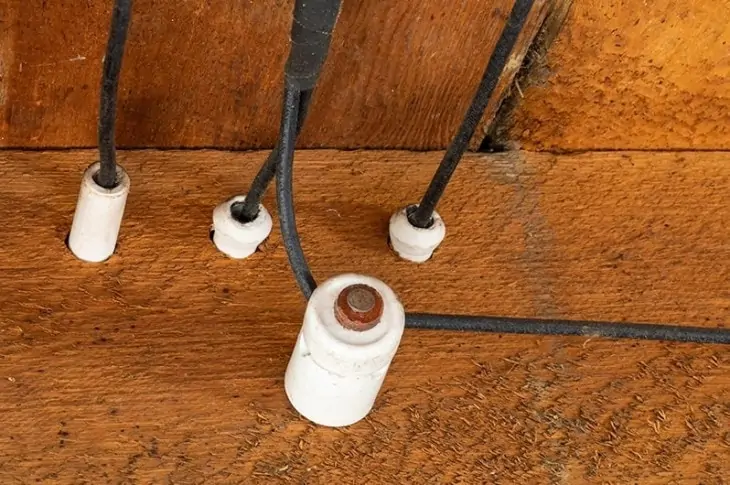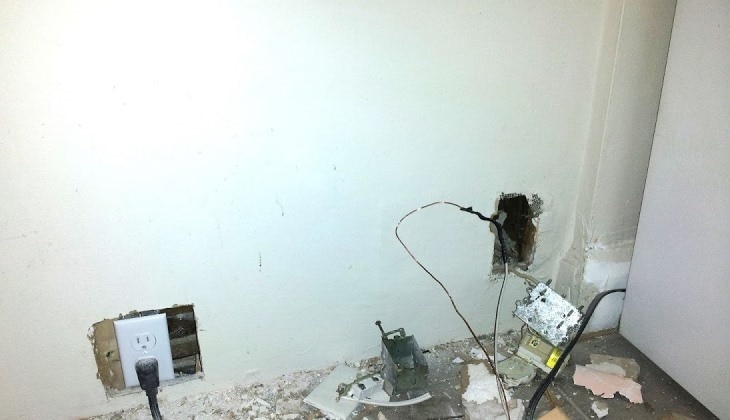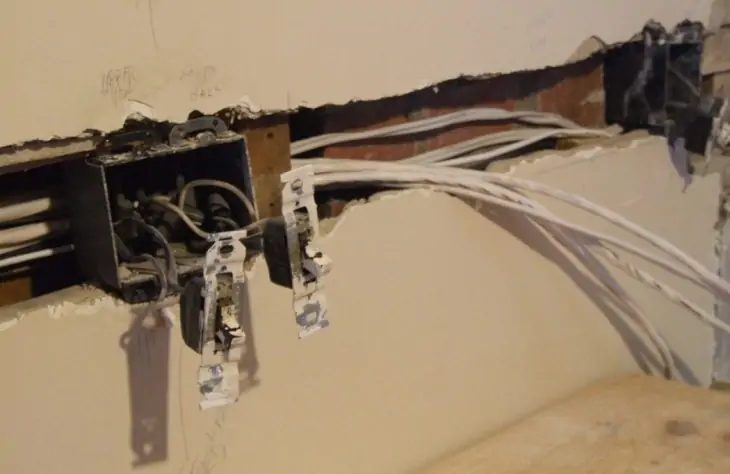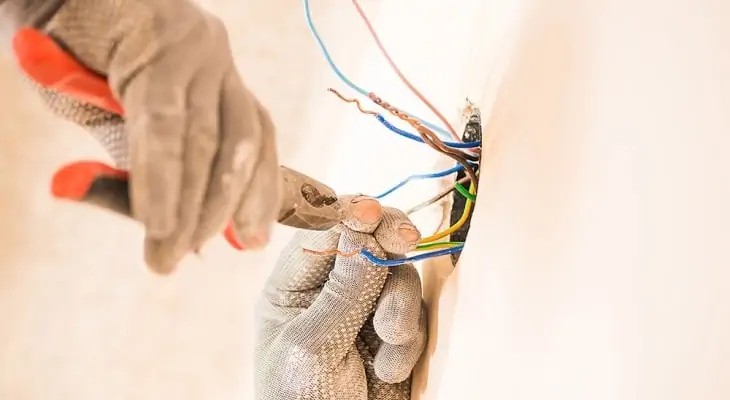Older homes may be charming, but often, the wiring is not! Antiquated wiring in an old home may be costing you your peace of mind! It is true that old wiring, like knob and tube wiring, does increase your risk for a fire, and also may cost you an arm and a leg on your electricity bill.
There are options for rewiring a house with plaster walls without removing the walls.
Fishing wires through the plaster or running wires along the baseboards will allow you to rewire your home to modern standards with minimum damage to the walls. Outdated, dangerous knob and tube wiring does not need to be completely removed from the home, only disconnected by a licensed electrician.
Table of Contents
What is Knob and Tube Wiring?

Knob and tube wiring is common in houses built between 1880 and 1930. It was relatively easy to install, and it was inexpensive. No wonder it was a popular choice among home builders!
Today, many homeowners are concerned about their knob and tube wiring but don’t know much about it. Knob and tube wiring is named because of its two main components: knobs and tubes.
The knobs are porcelain knobs that are attached to the beams and studs in the walls. Rubber sheathed wires run between each of the knobs. The wires are wrapped around the knobs in order to keep tension and hold the wires away from the wooden beams.
If a wire needs to go through a beam, it is encased in a porcelain tube. Porcelain was used because it helps the heat from the wires dissipate. This innovation saved many homes from fires!
One of the main drawbacks of the knob and tube wiring system is that there is no ground wire. A ground wire runs from your house into the ground. The purpose is to carry excess electrical currents safely away from your home and into the ground.
The other drawback to knob and tube wiring is its electrical limitations. Think about it. A house in 1930 only had electrical lights, and maybe a radio.
Think about all the electrical devices we use today! Chargers, televisions, kitchen appliances, and the list goes on and on. The knob and tube system was never designed to stand up to the electrical load of modern life.
What Are the Codes?
Building codes vary by location. It is important that you understand the building codes before you start your project! The local building codes will give you guidance on what kind of wire to use and how many outlets need to be on each wall.
Even if you have electrical experience, most locations will require that you hire an electrician to connect your wires to the electricity source. They will also probably inspect your wiring job. It is important that you hire a licensed electrician so that your home will be up to code!
What Are Your Options for Rewiring a Home with Plaster Walls?
Tear Down the Walls

Hopefully, this will be your last resort! You should be able to rewire your home without destroying your plaster walls. If you do have to tear down the walls to the studs, you will need to install drywall after you finish wiring.
Fish the Wires
This is the method the professional electricians usually use! This method involves many small, patchable holes in the walls. Once you have a small opening, you can use a wire and cable pulling tool to feed the wires through the wall.
You may run into obstacles along the way. This method requires patience and diligence! Again, check the codes in your area or talk to a licensed electrician for guidance.
Run the Wires Along the Baseboards
This method may save you a lot of fishing! Running the wires along the baseboards is especially easy if you have tall baseboards.
Carefully remove the baseboards, and run the wires along the floor plate, right behind the baseboards. You will still have to fish the wires up to boxes and switches, but, overall, wires you can see are a lot easier to work with!
Hire a Professional
Electric wiring can be complicated! It can also be dangerous if done improperly. Don’t risk your home and your life if you do not know what you are doing. Hire a trusted electrician if you do not have prior experience with electricity and wiring.
The price of an experienced electrician will be worth it if it keeps your home and your family safe. Don’t lose another night’s sleep over substandard wiring!
What Should I Do with the Old Knob and Tube Wiring?

Hire an electrician to disconnect the original wiring. It does not have to be removed. However, it does need to be disconnected! Leaving the original wiring intact may cause a fire or other hazard.
Do not attempt to disconnect the knob and tube wiring yourself. Find an electrician who has experience with old homes and original wiring.
Final Thoughts
Don’t let outdated wiring worry you for one more minute! Update your wiring without losing the beauty of your original, plaster walls. You can fish the wires through the plaster, run them behind the baseboards or hire an electrician to safely wire your home.

